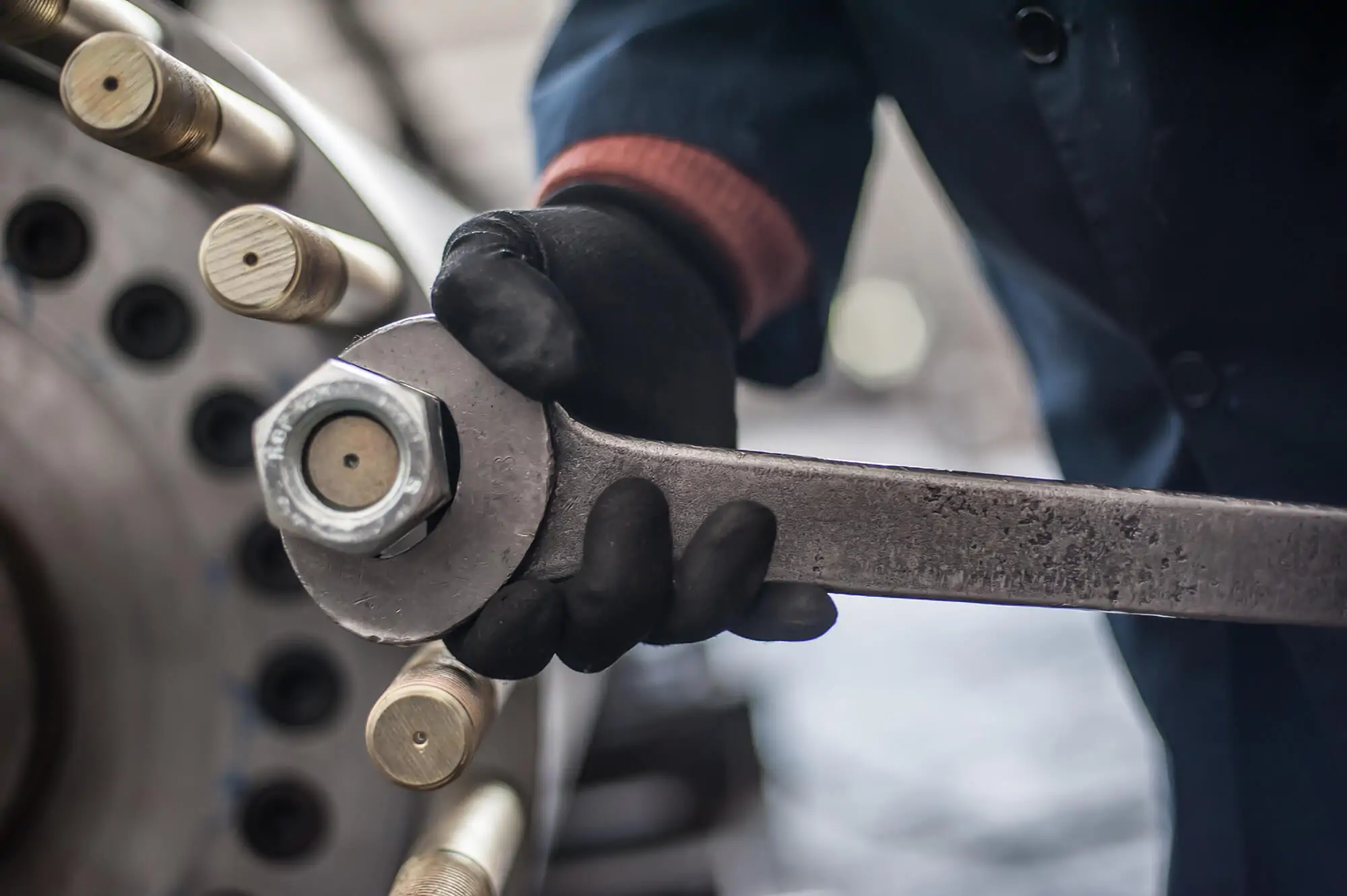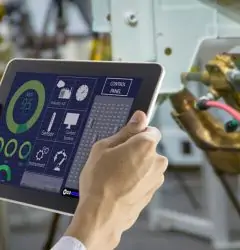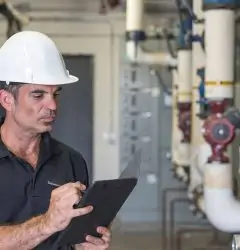07 Jul

Exactly What Is Equipment Maintenance?
The process of keeping business equipment in good and reliable working conditions is called equipment maintenance. It includes corrective repair work and routine maintenance. This equipment can be computer systems, heavy vehicles, tools, and all mechanical assets. Various types of resources are required for repairing this equipment. For example, heavy construction equipment is repaired differently as compared to the repairs performed on automated food processing machines.
What Are The Types of Equipment
Earth Moving Equipment
- Excavators
- Graders
- Loaders
- Skid Loader
- Crawler Loaders
- Backhoe
- Bulldozers
- Trenchers
- Scrapers
- Wheeled Loading Shovels
- Construction Vehicle
- Tippers
- Dumpers
- Trailers
- Tankers
Material Handling Equipment
- Crane
- Conveyors
- Hoists
- Forklifts
Construction Equipment
- Concrete Mixture
- Compactors
- Pavers
- Road Rollers
- Tunneling Equipment
- Road Headers
- Tunnel Boring Machines (Tbm)
What Are The Four Types of Maintenance
Corrective Maintenance
Corrective maintenance is performed after the problem appears, and the equipment users report it to the department of maintenance. This type of maintenance enables the maintenance team to fix the issues and bring equipment back to its proper operational condition. Corrective maintenance is both planned and unplanned, and it depends on whether or not the organization has a well-developed maintenance plan for dealing with maintenance requirements. When preventive maintenance fails to predict problems, corrective maintenance comes to the rescue.
Predetermined Maintenance
It depends on the manufacturer’s developed the program, and that is why it is not one of the popular types of maintenance. Predetermined maintenance is performed according to the maintenance program, as described by the manufacturer. The department of maintenance has to follow it. This can also lead to an increased risk of added downtime and delay in business operations.
Condition-based Maintenance
Condition-based maintenance, in terms of implementation, is the most complicated type of maintenance. It involves regular check-ups and a well-developed maintenance plan that keeps a system from breaking down unexpectedly. It monitors the equipment’s state and determines what type of maintenance is needed.
Predictive Maintenance
This type of maintenance is performed to monitor the condition and performance of the equipment used in operations. One of the main reasons to perform predictive maintenance is that it helps to minimize the risk of breakdowns and failures. Various sensors are integrated with predictive maintenance software, which generates notifications on preset sensor values and generates a task for the worker.
Preventive Maintenance
Preventive maintenance program for equipment identifies the equipment breakdowns and failures before they even appear. The maintenance plan contains preventive measures by manufacturers to reduce the risk of heavy equipment failures and unplanned breakdowns. A well-developed preventive maintenance program is necessary for industries because it helps to keeps equipment in reliable working order. A preventive maintenance software is essential for a succeful preventive maintenance operation.
Which Type of Maintenance Is Most Expensive?
Maintenance costs almost half of the total costs of operations. Developing a maintenance plan and performing maintenance according to it costs a good share of overall operational costs; however, if it is unplanned, it may lead to added costs as it will increase the downtime and delay in business operations.
To be better said, the profitability of a company heavily relies on how proactively the maintenance team plans, develops, and implements its maintenance program. Implementation of a strong maintenance program is, therefore, important to ensure that equipment is reliable to use during operations. It also helps to reduce the costs of production.
Different plants and facilities have different needs and requirements. Therefore, to meet the requirements of maintenance, it is important to have a functional maintenance program with different maintenance types involved to be prepared for any kind of issue.
What Are the Types of Equipment Maintenance
Preventive Maintenance
It prevents any equipment damage from happening through continuous replacements of problematic and broken parts. Equipment is regularly inspected and monitored for parts that require fixing, repairing, and replacing.
Predictive Maintenance
Predictive maintenance is performed in equipment by replacing the problematic parts. It is done on the basis of predictions that are made using a tool. If the preventive maintenance method is based on schedule only, then the predictive maintenance method is based on measurements’ results.
It uses five senses, such as hearing is there are any irregular and strange sounds, touching to see the temperate, etc.
Corrective Maintenance
The corrective method is performed to repair the equipment when a problem appears. The maintenance team reports the issues to the maintenance manager and works to fix the problem according to the maintenance plan. It improves the reliability of equipment also minimizes the risk of downtime and unplanned breakdowns.
Breakdown Maintenance
Breakdown maintenance is where the equipment is left to break down completely. This type of equipment is not used in daily business operations, so their leaving them to break down completely does not affect the productivity of the company. The cost of repairing/replacing these sorts of equipment is also low, and very little time is required to repair or replace them.
Types Of Equipment Maintenance Workers
The maintenance team is responsible for implementing the maintenance plan, and the team involves maintenance managers, supervisors, and technicians.
Maintenance Technicians
Equipment maintenance technicians are responsible for handling general repairs and upkeep work. Their job is to test and run routine inspections on business equipment according to the directions of maintenance managers or supervisors. These technicians can also be individually specialized to deal with certain types of business equipment, or they can cater to general maintenance requirements.
Maintenance Supervisors
These people supervise maintenance technicians and are responsible for planning maintenance tasks for every day. Maintenance supervisors work to see that all health and safety requirements are taken care of. They manage workload and deal with tasks of preventive maintenance.
Maintenance Managers
Equipment maintenance managers are tasked to deal with higher-level maintenance planning. They oversee supervisors. These managers set long term goals rather than everyday requirements.
Industries That Utilize Equipment Maintenance
Any type of industry that uses equipment utilizes equipment maintenance. Here are some major examples of industries that adopt equipment maintenance:
Food Processing
Mobile equipment, heavy machinery, and all other handheld tools that are used in food processing require equipment maintenance.
Plastic Manufacturing
Plastic manufacturing plants utilize a good range of lightweights and heavy equipment, and they require regular maintenance.
Steel Mills
Steel fabrication plants have heavy equipment, and they require different methods of maintenance according to needs.
Restaurants
Commercial kitchens carry a variety of equipment, and they always have to be in good working condition to prevent interruptions and delaying their operations. Thus they require equipment maintenance. IT also helps restaurants to keep up with regulatory maintenance.
Construction
Handheld power tools, safety gear, heavy mobile equipment used in construction must be in good working conditions. Therefore they require a strong equipment maintenance management program.
Automobile Manufacturing
Fabrication and assembly of vehicle parts need fairly tuned equipment. When equipment is in good repair, the production is up to the mark.
Workshops
Workshops utilize a good range of tools and other items, for example, metal products, blown glass, woodworking, etc. Based on this industry’s standards, workshops require equipment maintenance as a necessary program.
Equipment Maintenance Certifications And Training
The AEMP and SMRP both offer certified programs that are relevant to equipment maintenance.
AEMP Certification
The Association of Equipment Management Professionals (AEMP) provides three types of certification programs for people who are working with off-road, heavy maintenance equipment. These programs are: Equipment Support Professional (CESP), Certified Equipment Manager (CEM), and Equipment Management Specialist (EMS) designations.
Certified Maintenance & Reliability Professional
The Society for Maintenace & Reliability Professional offers a CMRP program which is designed for people who are working in any kind of maintenance capacity. It also includes equipment maintenance. This program requires the applicant to pass a sit-down test.
Steps Involved In Maintenance Program
Setting Goals
Before you attempt to assess, analyze, and inspect, outline certain goals that you want to achieve through your maintenance program. Highlight the focus of your maintenance program. Define your goals clearly so that your team will understand what result is expected to be achieved. Prioritize your program based on these goals.
If you focus on minimizing expenses, you should set goals to reduce the downtime and costs that are associated with unplanned breakdowns and failures. If your focus is regulatory compliance, you should plan on improving your planned maintenance percentage.
Recording Equipment
Keeping track of your equipment is an important step. You can use the help of a software to simplify the process as you will be collecting a good range of equipment data.
It is always better, to begin with, the basics. Start with recording the make and model, serial numbers, important specs, equipment’s location. After these details, continue to record secondary information like equipment’s age, condition, and the individual, team, or department responsible for the equipment.
Give a priority rating to the equipment during the data collection process. It helps to define how important the equipment is for daily operations.
Mention any previous failures that occurred in equipment. This information will help you to calculate the overall maintenance cost. Also, you will know when equipment requires replacement.
Take a closer look at the data you collected about the state of your equipment (age, condition, etc.). Deeper analysis at this stage will help you start making some important decisions.
Analyzing and Prioritizing
In this step, you will analyze the health of equipment, and you will give them ranking by priority. Begin to determine whether or not the machine is functioning according to the manufacturer’s specifications.
Define how greatly an equipment failure would affect your operations and safety. This will also help you to know which equipment is not serving its purpose and needs to be replaced. You can also save a lot of money this way.
Once you are done prioritizing your equipment, define some realistic goals for operations. It will enable you to track the effectiveness of your maintenance plan.
Planning & Scheduling Maintenance Tasks
Start with equipment that ranks higher on the equipment priority list. Begin setting up a maintenance schedule for preventive maintenance work. Develop a schedule for a year and break it into daily, weekly, monthly, quarterly, bi-annual, and annual tasks.
When it comes to determining what is necessary for your equipment, begin with recommendations of manufacturer and warranty conditions after that consider the history of equipment and input of people who work with the machine daily.
When scheduling a task, mention the work that needs to be done, highlight what procedures are required and what tools and parts will be required. Repeat this with each of your equipment. An equipment preventive maintenance checklist software will help a lot here.
Delegating Tasks & Training
Give proper training to your workers. It helps you to obtain the most out of your maintenance program. Train your team for all big and small maintenance tasks. It involves all sorts of maintenance goals. The people who will be working with the equipment and dealing with maintenance tasks will be responsible for meeting the maintenance goals.
Why Is It Important To Maintain Tools And Equipment
Equipment maintenance helps to prevent unplanned breakdowns and failures from occurring. It enables you to extend the life of your machines and maintain uninterrupted business operations. Equipment and tool maintenance allows you to minimize the costs spent on heavy equipment repair and fix the equipment that breaks down unexpectedly. Also, the quality of your products will be up to the mark if your equipment is in good working conditions.
Why Are Equipment Checks Important
Equipment maintenance helps you to be prepared for failure or breakdown. With a strong and proactive maintenance program, you are enabled to deal with all sorts of interruption with little downtime and costs. Equipment checks allow you to identify problems before they appear and cause costly damages.
Equipment Maintenance Practices
Gathering Baseline Information
Collect all crucial details about your capital assets. Estimate their usage. Before you begin to check in your equipment for repairs, assessing the scale of the challenge can provide a lot of help.
Collect details for equipment downtime, the time between failures cost spent on replacement os parts, and response time of technicians, etc.
Choosing A Support System
When picking an equipment maintenance software, companies can go for manual as well as computerized systems. Software is, however, costly, and it will need upfront investment along with subscription fees. But using a software can provide a good range of benefits.
Equipment maintenance software enables you to import mass data of your assets on a cloud-based platform. You can easily schedule reminders for maintenance.
Maintenance Checklists
A maintenance plan must be well-developed and well-defined. It should be reviewed regularly. For ensuring the proper implementation of the maintenance program, it enables you to list down service events.
The preventive maintenance checklist for equipment helps a lot when it comes to monitoring and adjustments and repairs without missing any crucial asset. The checklist usually contains the following activities:
- Lighting
- Electrical
- Safety
- HVAC (heating, ventilation and air conditioning)
- Buildings
- Fixtures and furniture
- Plumbing
Consistency in Inspection
Even a well-developed maintenance program will fail if you do not follow it consistently. The maintenance technicians may miss out on any repair when they have a lot of work pressure. This can lead to unexpected equipment failure.
It is a must to follow the plan and keep track of all maintenance events so that you maintain consistency in inspection and implementing the maintenance program. For speedy monitoring, you can switch to equipment maintenance software as it will help you to eliminate any risk of errors and boost up your maintenance progress.
Sending out Custom Reminders
Organizations that work with different types of assets usually find it difficult to keep track of their maintenance sessions. Workers can forget the details and maintenance tasks. It can lead to safety hazards. To prevent such unfortunate events, it is better to maintain a service log. It will allow you to send out reminders and email alerts of your maintenance sessions.
Benefits Of CMMS In Equipment Maintenance
- Increased Productivity
- Longer Life of Equipment
- Minimized Downtime
- Easy Tracking of Maintenance Sessions and Costs
- Accessible Asset History
- Instant Notifications
- Automated Schedule Maintenance
- Faster Reporting and Analysis
- Greater Visibility
- Reduced Labor




Ecodocs